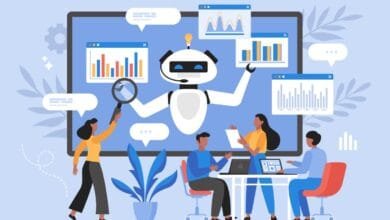Unlock AI Efficiency: How Procedural Memory Slashes Costs

▼ Summary
– Memp is a new technique from Zhejiang University and Alibaba that gives LLM agents dynamic procedural memory, enabling continuous learning from experience.
– It addresses the fragility of current agents in complex tasks by allowing them to reuse and refine skills instead of starting from scratch each time.
– The framework operates through a continuous loop of building, retrieving, and updating memory, with strategies to evolve based on successes and failures.
– Testing showed Memp-equipped agents achieved higher success rates, used fewer steps and tokens, and allowed memory transfer from larger to smaller models.
– Future improvements may involve using LLMs as judges for nuanced feedback, advancing toward fully autonomous and adaptable enterprise AI agents.
A groundbreaking collaboration between Zhejiang University and Alibaba Group has introduced a novel method for enhancing the capabilities of large language model agents. This innovation, known as Memp, equips AI systems with a dynamic procedural memory, enabling them to learn continuously from experience and perform complex tasks with increasing efficiency. By mimicking the way humans refine skills through practice, this approach promises to significantly reduce operational costs and improve reliability in enterprise automation.
Traditional AI agents often struggle with long-horizon tasks due to their inability to adapt to unexpected disruptions such as network failures or interface changes. When these interruptions occur, most systems must restart the entire process from the beginning, leading to wasted time and resources. What makes Memp different is its focus on capturing and reusing procedural knowledge, allowing agents to build on past successes and learn from failures rather than repeatedly solving the same problems from scratch.
At the heart of Memp lies a three-stage framework that operates in a continuous loop: building, retrieving, and updating memory. Experiences, or “trajectories,” are stored either as detailed step-by-step records or as abstracted scripts. When faced with a new task, the agent searches its memory using methods like vector matching or keyword extraction to identify the most relevant prior experience. The system’s true strength, however, lies in its update mechanism, which refines stored procedures based on new outcomes, prioritizing successful executions and learning from errors.
This approach distinguishes Memp from other memory-augmented systems, which often focus on recalling specific events or conversations rather than generalizing procedural knowledge across tasks. As lead researcher Runnan Fang emphasized, Memp is designed to help agents understand how to perform tasks, not just what happened in the past. This cross-trajectory learning capability enables more efficient performance and reduces the need for costly recomputation.
A common challenge in implementing such systems is the “cold-start” problem, how to initialize memory when no prior examples exist. The team addressed this by defining evaluation metrics that allow agents to explore and retain only the most effective strategies. This bootstrapping method accelerates learning without requiring extensive manual input, making the system practical for real-world deployment.
In tests using models like GPT-4o and Claude 3.5 Sonnet, Memp demonstrated remarkable improvements in both success rates and efficiency. Agents completed tasks with fewer steps and lower token consumption, translating to reduced computational expense. Perhaps most notably, procedural knowledge acquired by a powerful model like GPT-4o could be transferred to smaller, more economical models such as Qwen2.5-14B, enabling them to perform at a higher level without proportional increases in cost.
Looking ahead, achieving full autonomy will require better mechanisms for evaluating performance on tasks lacking clear success metrics. The research team suggests that using LLMs as judges could provide the nuanced feedback needed for self-correction in complex, subjective scenarios. This would mark a significant step toward creating truly adaptive and resilient AI systems capable of handling sophisticated enterprise workflows with minimal human intervention.
(Source: VentureBeat)






